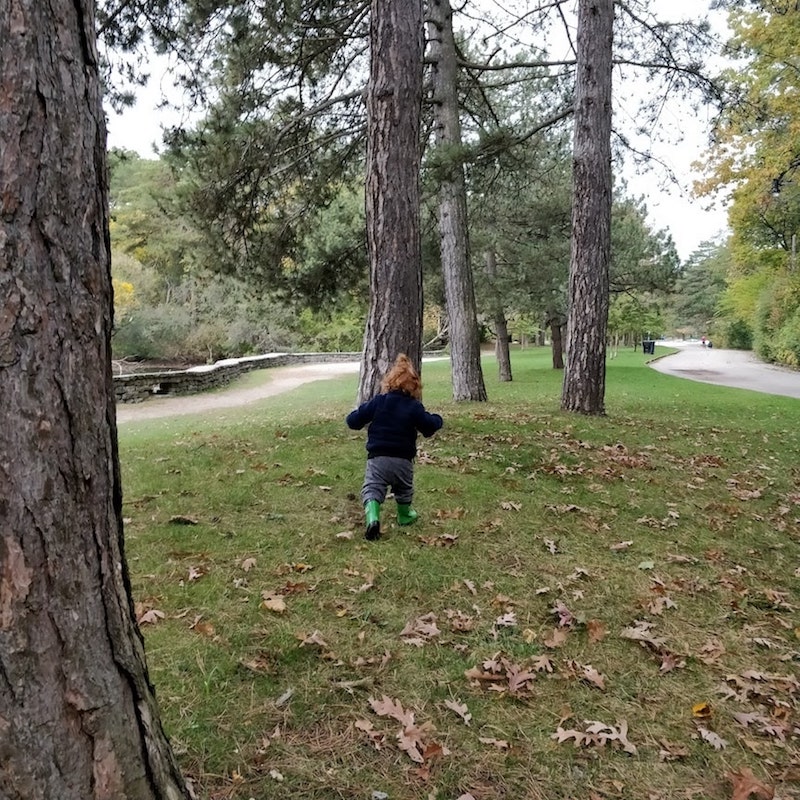This morning after my partner left for work, we quickly got ready to get outside and go to the forest nearby. We’re lucky to hour our little forest, and I feel grateful to say things like “let’s visit our trees” on a regular basis.
There was so much to learn and so much to do. We walked hand in hand for most of the trip to the park, but once we got past the traffic gates I let him go and he asked if he could run. I’m unsure how to feel about this question, or why he’s asking it, but I told him of course, but un-fun mom had to ask him to stay out of the puddles until after we had finished our walk, and were coming back home.
We went to visit “our” trees, but our visit there was brief because in the distance, we saw a group of kids playing and yelling, and my TinyHuman was there for it.
He asked “can I go play with them?” - I told him we could go over there, but it would be up to all of them if they played together. Can’t escape a lesson in consent I guess.
So we all stayed together for a while, walking through the forest, and through paths that we normally didn’t go on. I love seeing the TinyHuman with other kids, because we don’t really do that often enough. Working on it, but I could be more diligent about setting up playdates and going to them.
Eventually we parted ways at the zoo (because free or not, we do not go there,) and me and the little one went over to the gardens. We came across a tree with a strange growth and wondered what it was - he pointed and asked “What’s that?” I took 1 semester of botany in university, and vaguely remembered that it was the result infection - it’s called a Burl. So I told him that it was because the tree had been sick. But when we got home, I had to double check that information.
I took 1 semester of botany in university, and vaguely remembered that it was the result infection - it’s called a Burl. So I told him that it was because the tree had been sick, but that we could look it up when we got home to make sure.
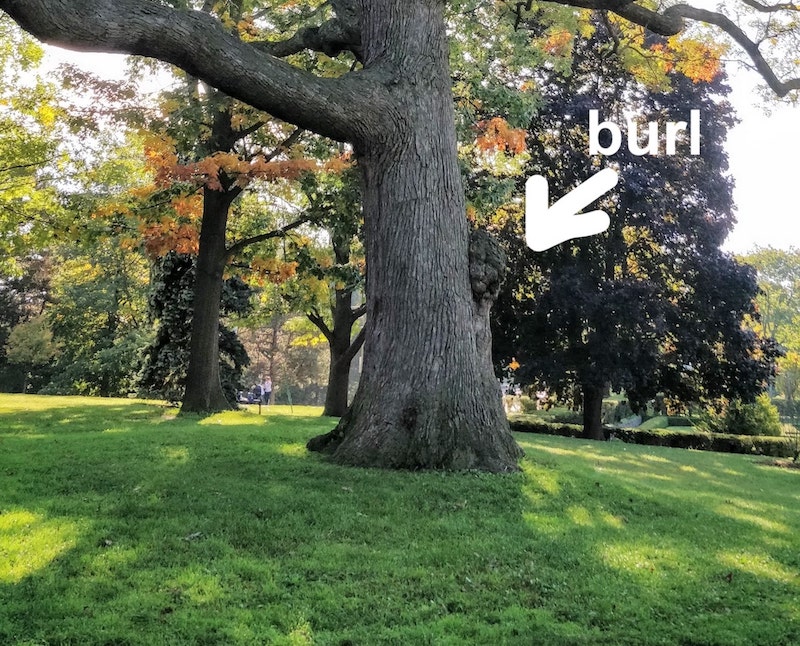
Burls, ,which look like weird growths on trees, happen as a result of the tree experiencing a stress of some sort - so things like injury, infection by a virus or fungus, or other environmental factors.
I think he found the idea that trees can get sick especially fascinating - because he repeated “trees get sick” in a sort of wonderfully awestruck and curious way while looking at this tree growth. Also ties into our very recent lesson of Mom gets sick too.
We enjoyed the day running around tree trunks, and walked through the gardens, towards Grenadier Pond. I spotted a wooly bear caterpillar (aka Pyrrharctia isabella, aka Isabelle tiger moth) so we stopped in our tracks to watch them zoom across the trail way.
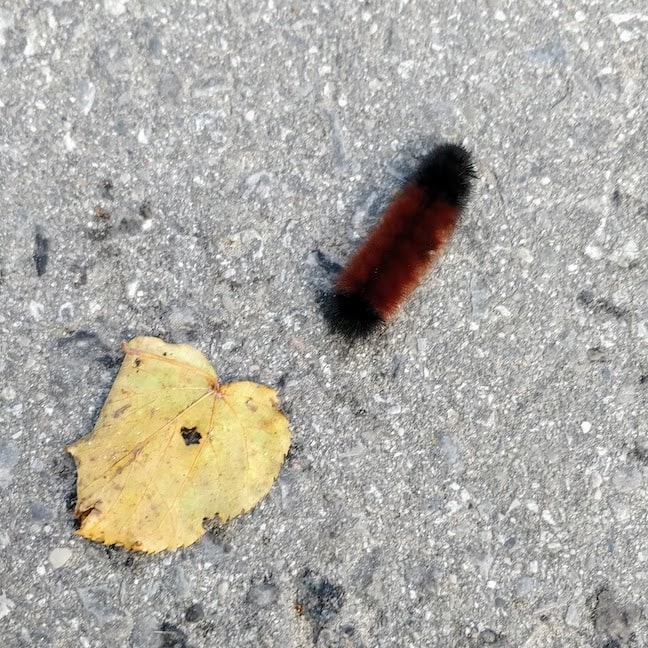
Wooly bear caterpillars turn into isabelle tiger moths and I think I prefer them in caterpillar form - but that’s not my call, ha ha ha.
Another person with a toddler came by, and decided to move the caterpillar off the trail, to a tree. I’m not sure if that was the right call, but her heart was in the right place, so I guess that’s as good as can be expected. Me and the little human were keeping the fuzzy dude safe on his journey up to that point.
We read Lois Ehlert’s “Red Leaf, Yellow Leaf” a few times, which I hadn’t noticed was about an urban transplanted tree when I put it in my bag this morning - it was a bit funny to be reading it in this forest full of old trees - albeit still relevant because there are also many transplanted trees in High Park and the book has a bunch of more in depth (but simplified) information about trees and leaves.
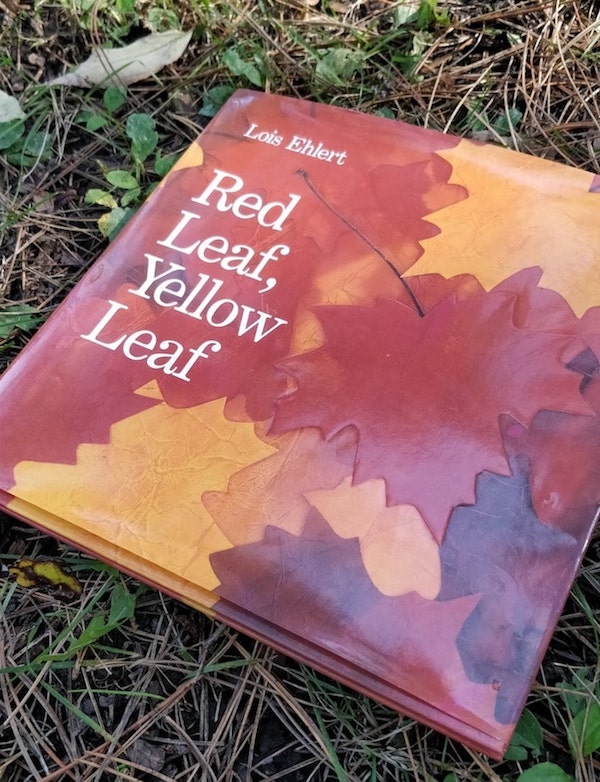
We have a really lovely book about why leaves change colour appropriately called…. “Why Do Leaves Change Colour” (by Besty Maestro) which of course, I haven’t been able to find in the house yet this fall.
There are lots of really fantastic resources online about why leaves change colour, but I like this one.
One final thing before we went home - there was a sign near Grenadier pond, and the Tinyhuman asked me to read it. It’s a wordy, but interesting background on how Grenadier Pond came to be - history of waterways and shorelines and I learned what a weir is. _(A weir or low head dam is a barrier across the horizontal width of a river that alters the flow characteristics of water and usually results in a change in the height of the river level.)_ They suggest visiting their website to learn more - so we totally did. Well, I did. The tiny human was already napping.
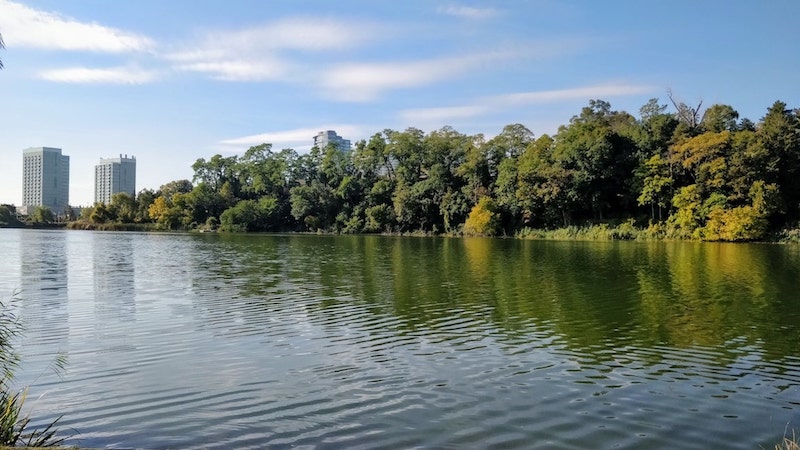
We walked back around, up a very tall staircase, around the High Park children’s teaching garden, and behind Colbourne Lodge, and walked back on a well worn trail to our trees, to play and build nests and watch fat squirrels diligently collecting acorns for the winter.

It was a lovely morning of hiking, learning, and fun.

